- Home
- slideshows
- miscellaneous
- I drove the Ford Ranger and the Chevy Colorado to see which midsize pickup truck was better - and the winner was clear
I drove the Ford Ranger and the Chevy Colorado to see which midsize pickup truck was better - and the winner was clear
First up is the newcomer. The 2019 Lariat SuperCrew four-wheel-drive Ranger was nicely equipped and stickered at almost $45,000. The base-price pickup is a little more than $24,000.

The SuperCrew configuration sports a 5-foot bed, but the Ranger can be had with a two-door cab and a 6-foot bed. The Ranger is a handsome pickup, especially in "Lightning Blue."
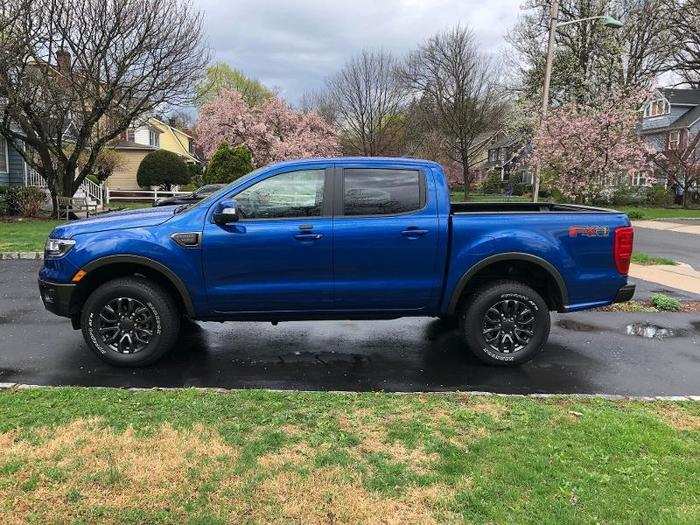
You could call the Ranger's front end "snouty," but it's also pretty truck-like for a midsize.
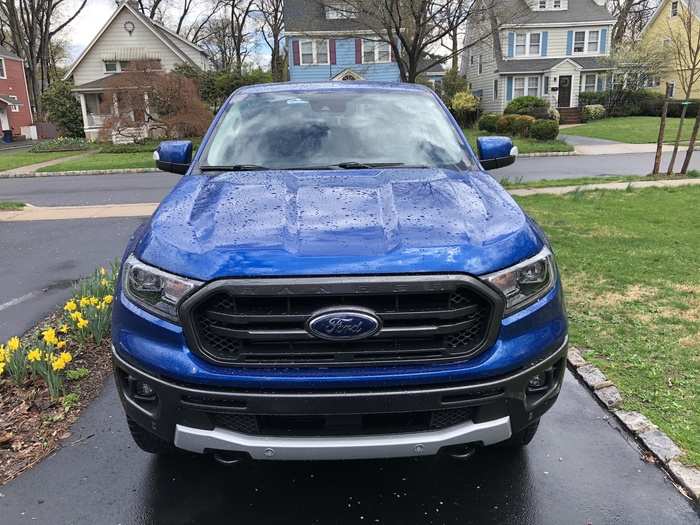
The 2.3-liter EcoBoost four-cylinder engine is a turbocharged power plant that cranks out 275 horsepower and 310 pound-feet of torque. Towing capacity is 7,500 pounds — enough to tow just about anything owners of the Ranger would want to.
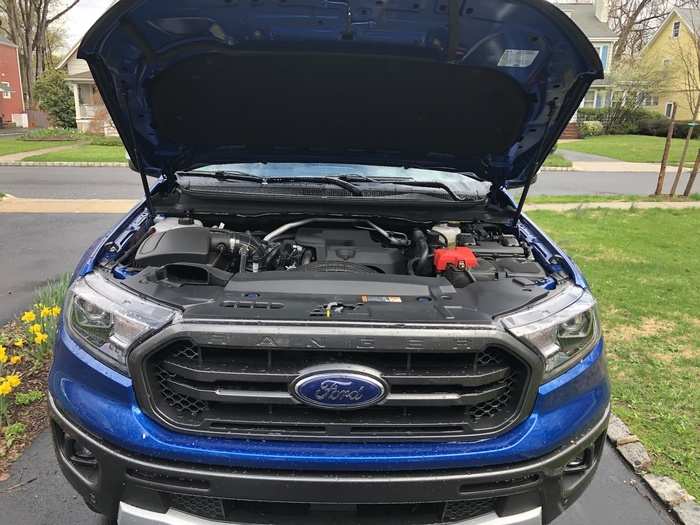
Ford's EcoBoost engine tech uses turbocharging to retain power with good fuel-economy. In this case, the truck gets 20 mpg city, 24 highway, and 22 combined. The 0-60 mph run is achieved is about 6.5 seconds.
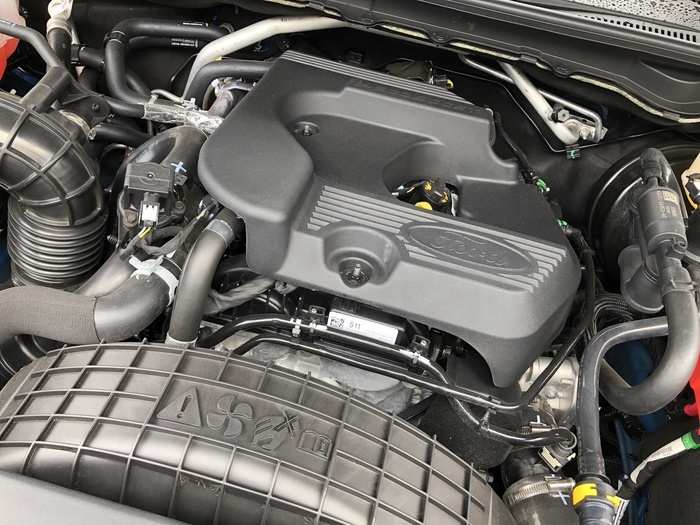
A 10-speed transmission handles the shifting duties.
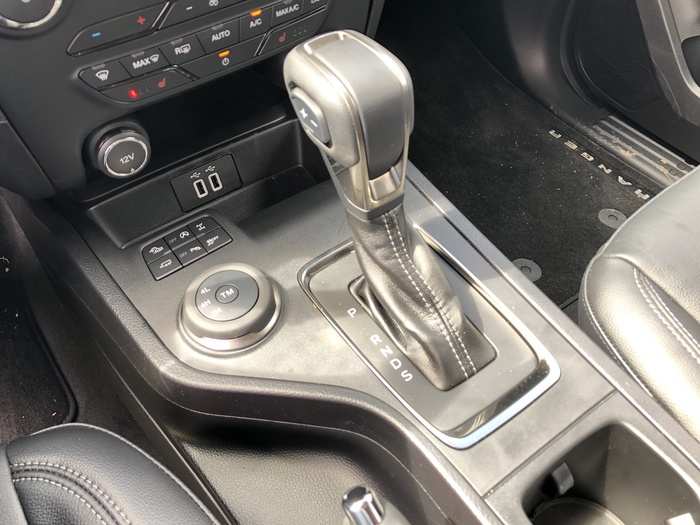
I didn't get to go all down-and-dirty with the FX4 setup, which an extensive 4x4 rig and even offers off-road cruise control.
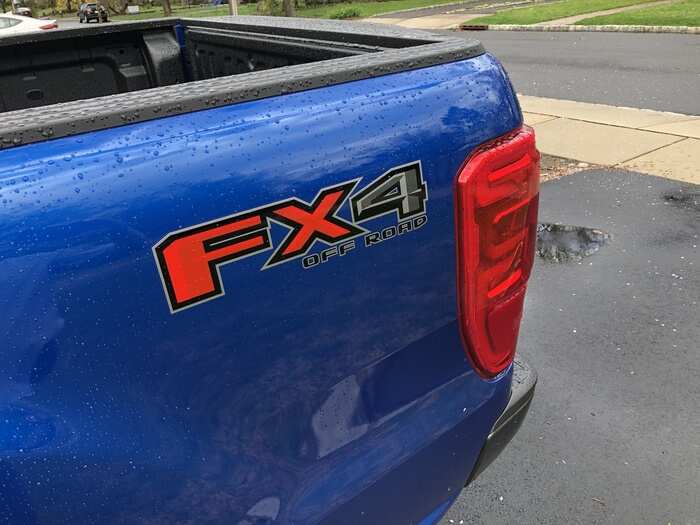
Our tester came with stout off-road rubber. Most of the pickups we test are lifted 4x4s.
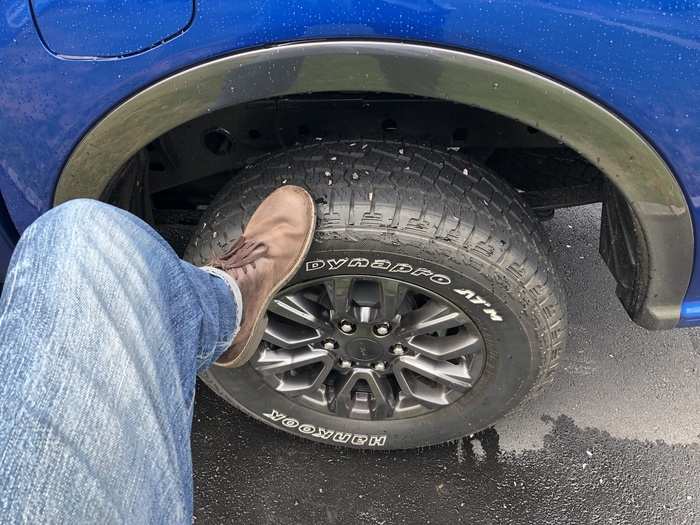
I put the Ranger to a more serious hauling test than the Colorado, making a run to Costco and loading up some furniture. The bed is big enough to handle these typical suburban tasks, and it could also easily handle mountain bikes and outdoor gear.

The interior of our tester was a no-nonsense "ebony," but the upholstery was leather. The front seats are heated.
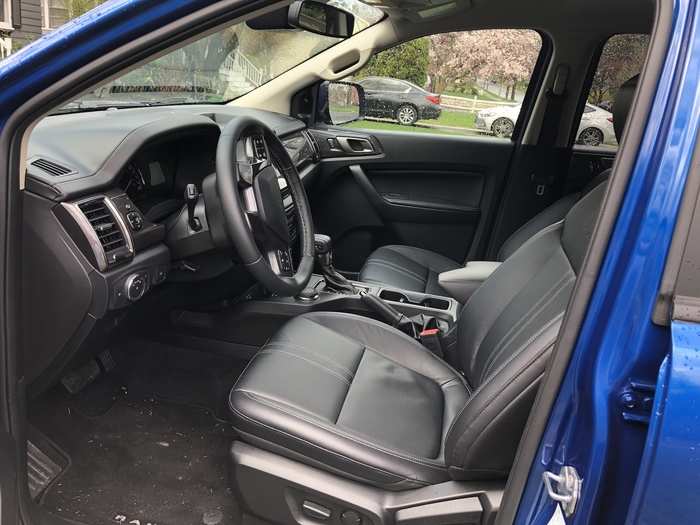
The rear bench seats, as one might expect with a smaller pickup, were snug.
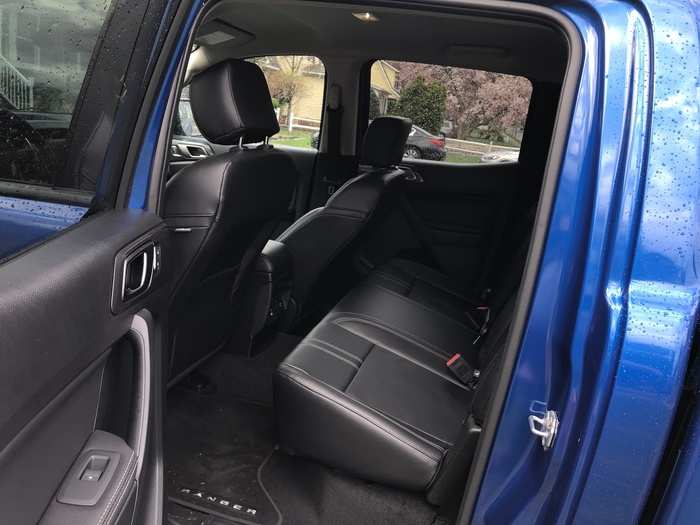
The leather-wrapped steering wheel felt premium, and you'll notice that the cluster presents a speedometer — no traditional tachometer, and that's fine. Old-school tachs aren't very useful on pickups.
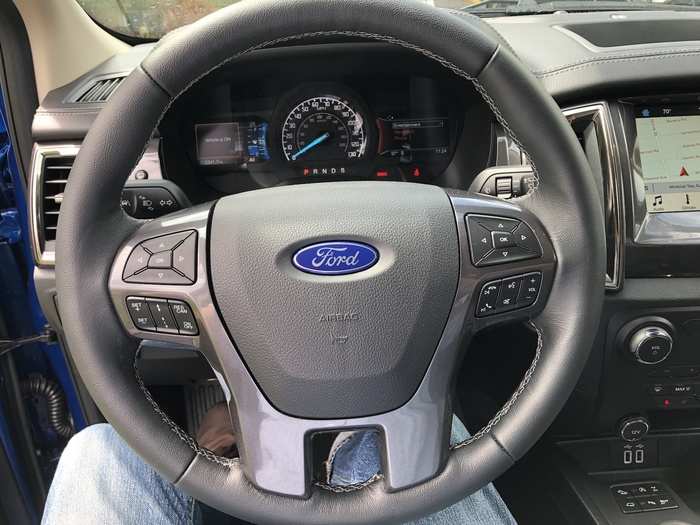
Ford's Sync 3 infotainment system runs on an 8-inch touchscreen. Sync 3 is one of the best in the industry. It provides superb navigation, easy Bluetooth connectivity, and AUX and USB device-connection options.
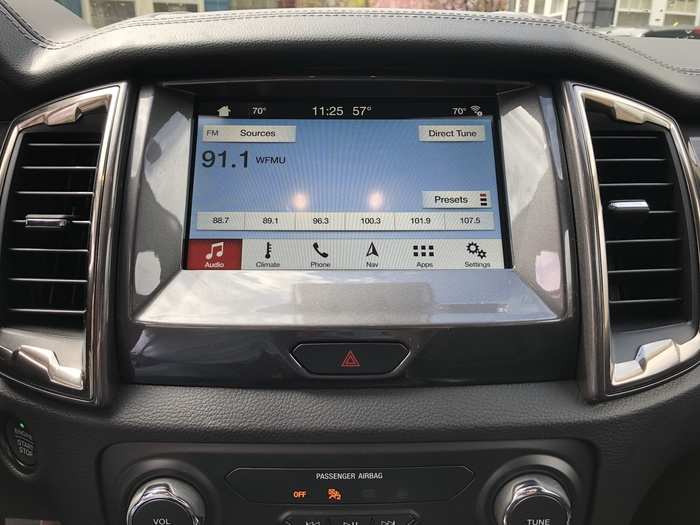
The 10-speaker Bang & Olufsen audio system in the Ranger I tested is a terrific extra. It sounds too good for a truck this small! Apple CarPlay and Android Auto are also available.
On to the Chevy Colorado. I've sampled the truck in three trims; here, we see a $43,475 ZR2 that was well equipped and ready for off-road action. But I've tested a closer-to-base ($21,300) and an aggressive Z71 version.
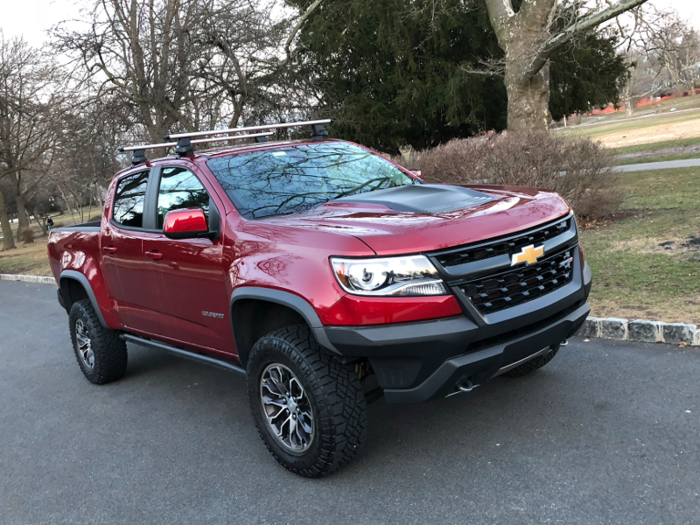
The 2018 ZR2 came with a fetching "Cajun Red Tintcoat" paint job. The truck had a crew cab and a "short box" bed. Some folks don't much like short boxes, but I think for the uses that for most owners, the short box is ideal.
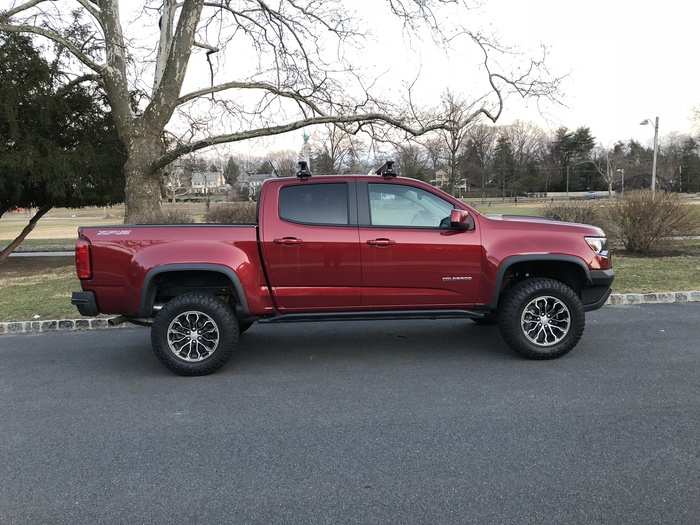
The ZR2 has a moderately more aggressive front end than the Ranger, and that gold bow-tie badge really pops against the blacked-out grille.
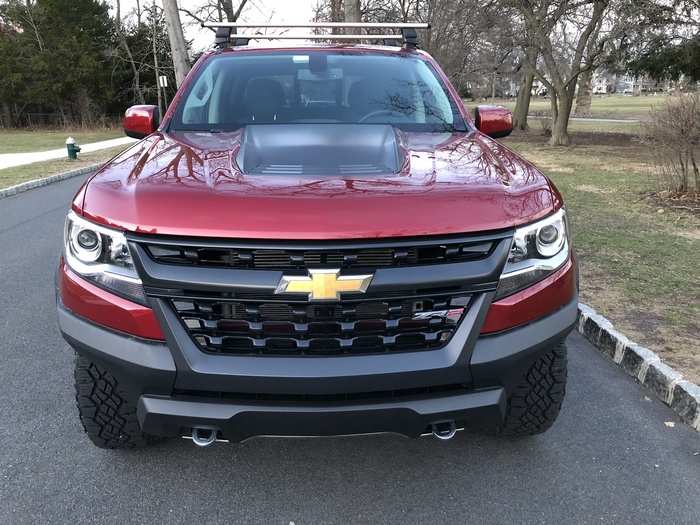
On paper, the 308-horsepower 3.6-liter V6 could be construed as underpowered. But it was anything but in my hands. This pickup has nice pop.
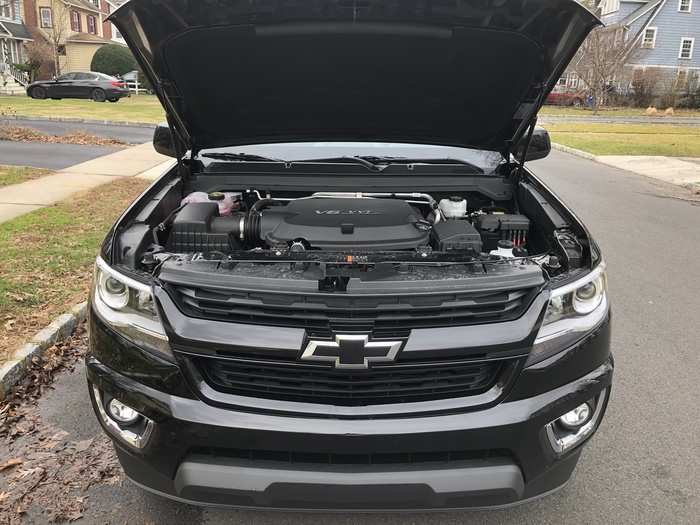
Fuel economy is 17 mpg city/24 highway/19 combined — not great, but also not bad given the oomph provided by the V6.
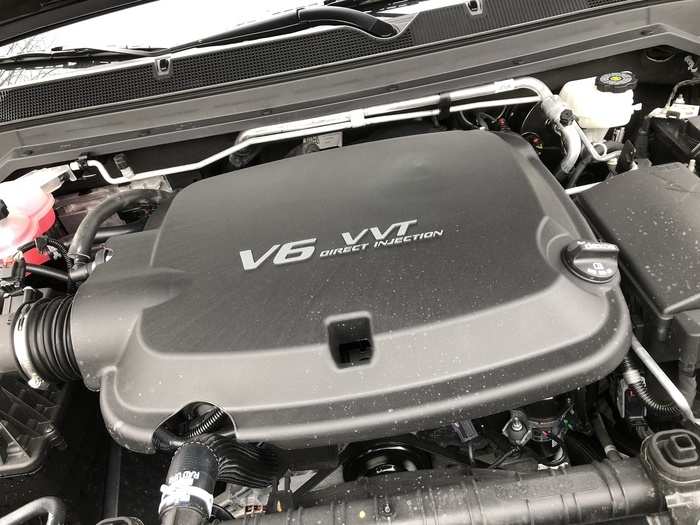
The Colorado ZR2 can tow up to 5,000 lbs. That's not massive for a pickup, but the non-performance Colorado and ZR2 aren't really intended for customers who will be hauling horse trailers. More likely, they'll attach a small trailer to pull an ATV, some JetSkis, or a modest camper.
The ZR2 has been clocked at a respectable 0-60 mph in 6 seconds, while the Z71 can haul 7,000 lbs.
A smaller, four-cylinder powerplant is also available for the Colorado.
The eight-speed automatic handles the Colorado's power without straining. Shifts are smooth.
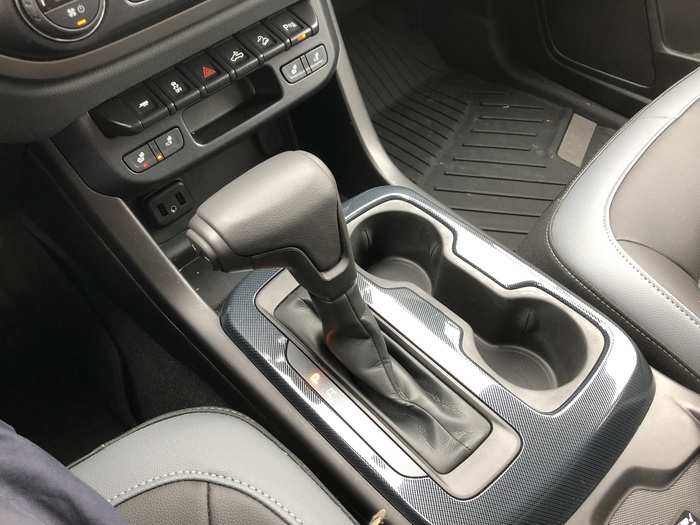
The 4x4 capabilities aren't advertised by the Colorado's stickers. But a sturdy 4x4 it is.
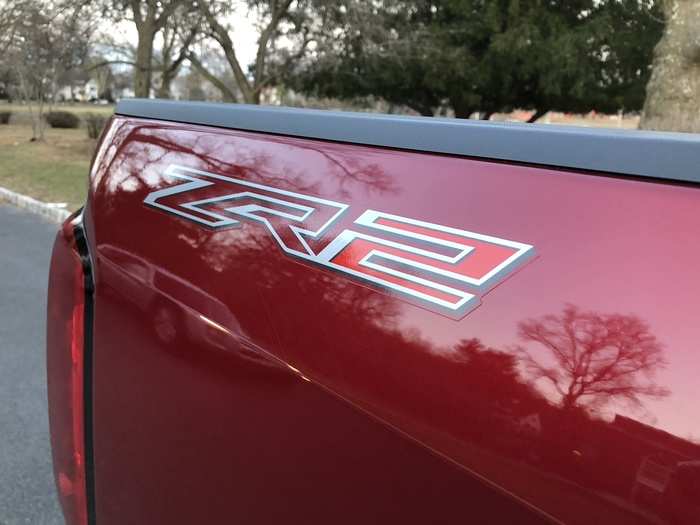
With the Colorado ZR2, you have electronic-locking differentials, front and rear, so the Colorado ZR2 is ready for serious off-roading. The front underbelly and rear transfer case are also shielded, so rock-busting won't cripple your pickup.

As far as the bed goes, there isn't much difference between the Colorado and the Ranger. Both trucks should satisfy the hauling needs of midsize buyers.
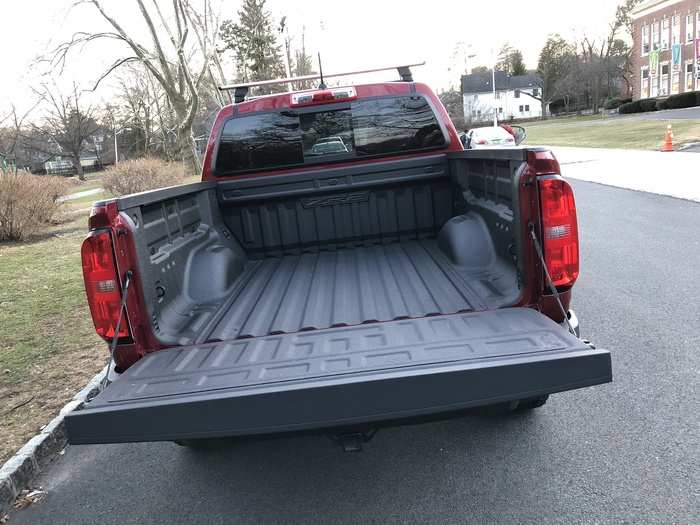
The Chevy's "Jet Black" interior is on par with the Ford's. It's a nice environment, near-premium without being luxurious. That's by design. This isn't a truck that's meant to be babied, so the interior has to be able to endure some punishment.
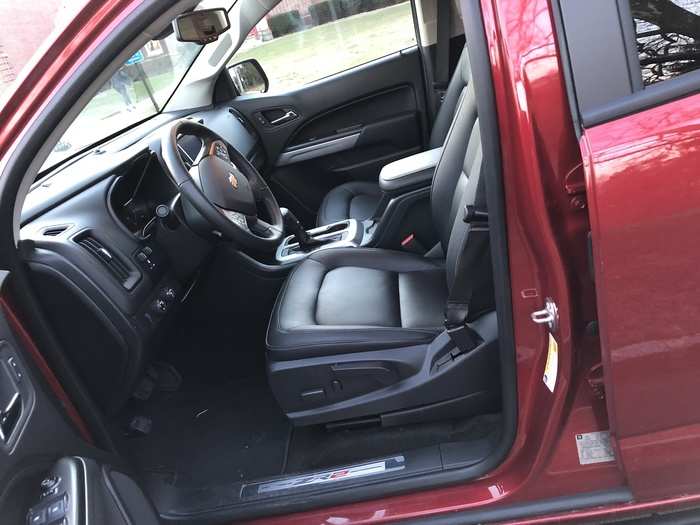
The driver gets a pretty typical Chevy setup as far as the steering wheel controls and gauges are concerned. There's a small info screen between the speedometer and the tachometer.
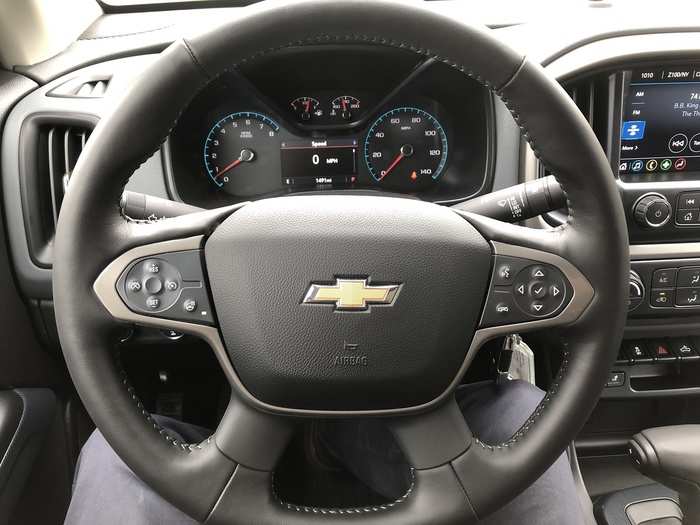
Beyond heated seats, cruise control, and nicely appointed leather-wrapped steering wheel, you don't get a lot of driver-assist features with the Colorado.
The eight-inch touchscreen runs Chevy's Intellilink infotainment system.
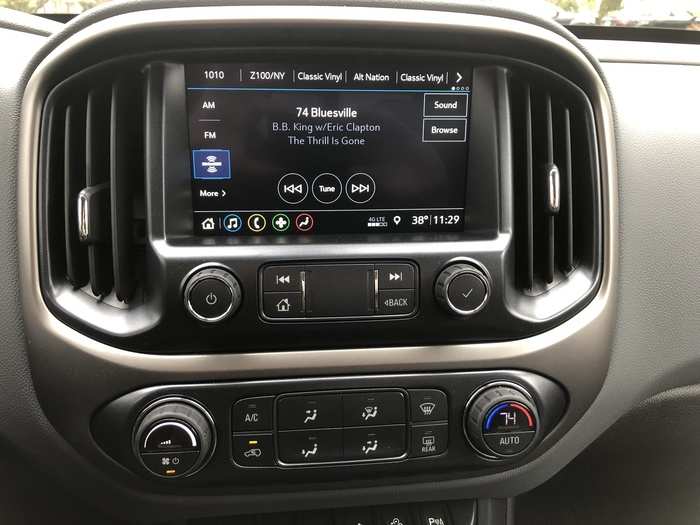
Bluetooth-device pairing is a snap, and there are USB/AUX options for plugging in gadgets. Like all GM vehicles, the Colorado has 4G LTE WiFi connectivity.
Apple CarPlay and Android Auto are available.
And the winner (for now) is the Chevy Colorado!
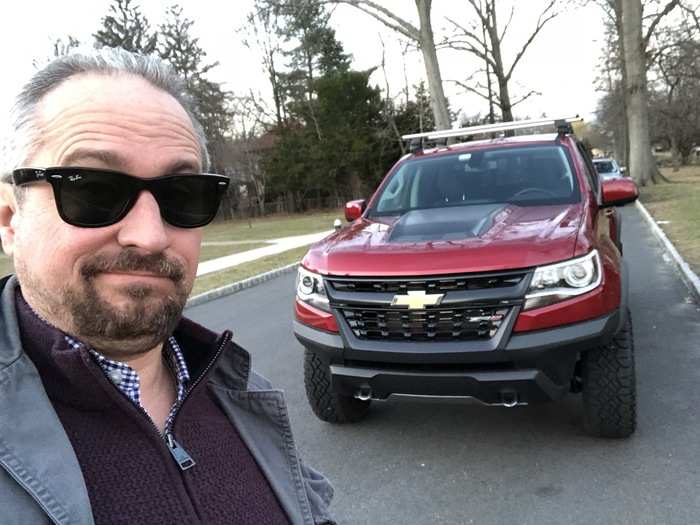
To be completely honest, I had the Ranger as my winner when I started this comparison. I drove the Ford more recently than the Colorado and I was extremely impressed. I also tend to think that Ford knows trucks and knows them well, so I give the Blue Oval the benefit of the doubt.
However, with three separate Colorado trims in my backstory — and yet another one coming soon, the ZR2 Bison — I've simply spent too much quality seat time in the Chevy. The ZR2, in fact, is one of the best pickups I've ever tested, period.
That said, this contest was TIGHT. In the end, I think I favored the ZR2/Z71 V6 engine and the Chevy infotainment system over the Ranger's four-banger and SYNC 3. But I didn't favor them by much. In truth, the consumer is officially spoiled for choice in the once-forlorn midsize pickup market, with excellent offerings not just from Ford and Chevy, but also stalwart Toyota with the robust Tacoma, nichey-y Honda and the Ridgeline, Chevy sibling GMC and the Canyon, and even Nissan and the aging Frontier.
When it comes down to Colorado vs. Ranger, you can't lose. And I'm assuming that Ford is going to offer a more performance-oriented Ranger Raptor to US buyers, as it does in other global markets. So Ranger will match up better with the Colorado line, which has been on sale in the US longer.
If you're an offroader, the ZR2 is worth a close look. But what about the Z71 package? It does add thousands to the price tag, and when all is said and done, the $42,000 Z71 that I sampled isn't much cheaper than the top-of-the-line, $43,500 ZR2. If you have plans for your Colorado that might be more on the brash side, and if you don't mind the menacing appearance, the Z71 trim is at least worth a gander.
The Lariat SuperCrew Ranger I tested was a few thousands bucks more expensive that even the ZR2, but I'd say it was ever-so-slightly better appointed and thus worth the extra cost. The Ranger has also been on sale outside the US for a while, so it's not as if this is an unproven truck.
There has to be a winner in these comparisons (well, most of the time — I could have declared it a tie). For me, and for now, that's the Colorado. But the Ranger is already close to being neck-and-neck, so in addition to a good, old-fashioned pickup truck war between Detroit rivals Ford and Chevy in the full-size segment, we now have a compelling undercard bout with midsize pickups.
I think that's great — and if you're a buyer, so should you.
Popular Right Now
Popular Keywords
Advertisement